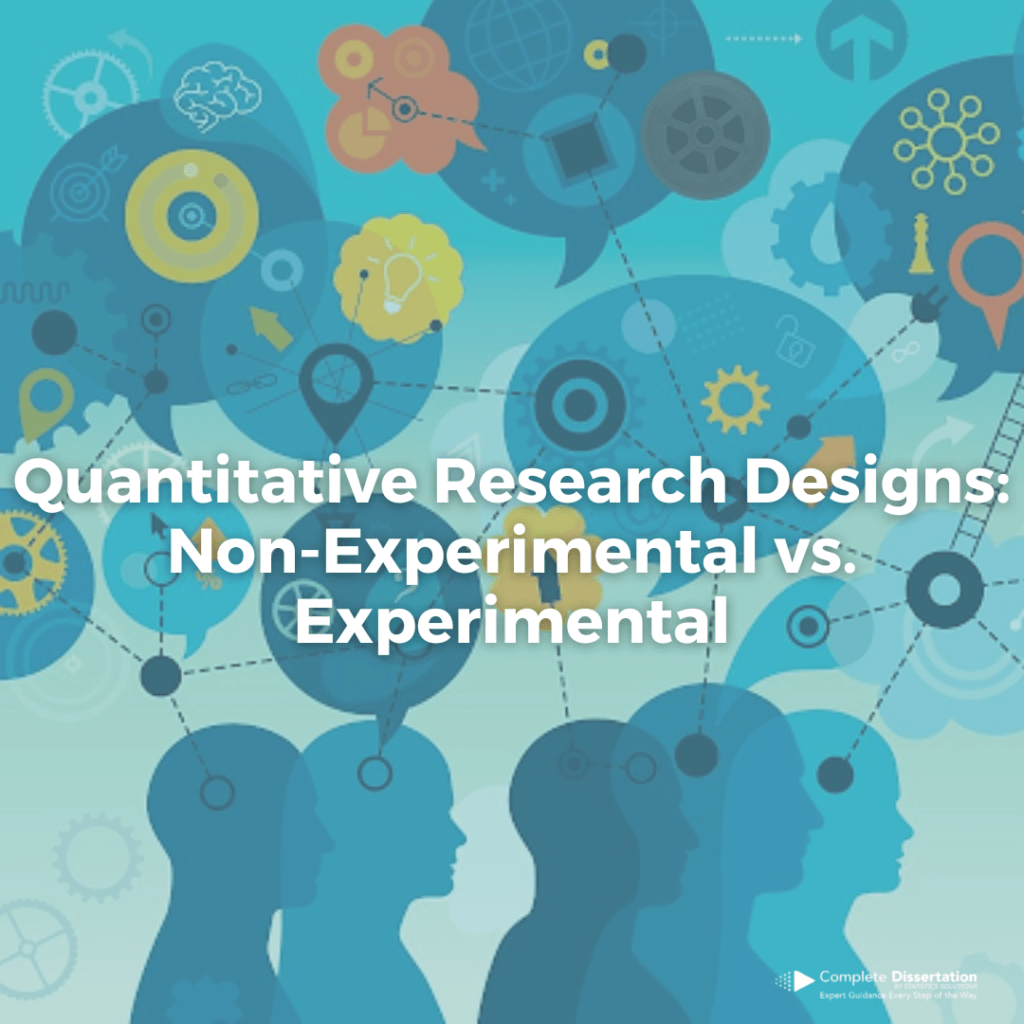Quantitative Research Designs: Non-Experimental vs. Experimental

While there are many types of quantitative research designs, they generally fall under one of three umbrellas: experimental research, quasi-experimental research, and non-experimental research.
Experimental research designs are what many people think of when they think of research; they typically involve the manipulation of variables and random assignment of participants to conditions. A traditional experiment may involve the comparison of a control group to an experimental group who receives a treatment (i.e., a variable is manipulated). When done correctly, experimental designs can provide evidence for cause and effect. Because of their ability to determine causation, experimental designs are the gold-standard for research in medicine, biology, and so on. However, such designs can also be used in the “soft sciences,” like social science. Experimental research has strict standards for control within the research design and for establishing validity. These designs may also be very resource and labor intensive. Additionally, it can be hard to justify the generalizability of the results in a very tightly controlled or artificial experimental setting. However, if done well, experimental research methods can lead to some very convincing and interesting results.
Non-experimental research, on the other hand, can be just as interesting, but you cannot draw the same conclusions from it as you can with experimental research. Non-experimental research is usually descriptive or correlational, which means that you are either describing a situation or phenomenon simply as it stands, or you are describing a relationship between two or more variables, all without any interference from the researcher. This means that you do not manipulate any variables (e.g., change the conditions that an experimental group undergoes) or randomly assign participants to a control or treatment group. Without this level of control, you cannot determine any causal effects. While validity is still a concern in non-experimental research, the concerns are more about the validity of the measurements, rather than the validity of the effects.

Discover How We Assist to Edit Your Dissertation Chapters
Aligning theoretical framework, gathering articles, synthesizing gaps, articulating a clear methodology and data plan, and writing about the theoretical and practical implications of your research are part of our comprehensive dissertation editing services.
- Bring dissertation editing expertise to chapters 1-5 in timely manner.
- Track all changes, then work with you to bring about scholarly writing.
- Ongoing support to address committee feedback, reducing revisions.
Finally, a quasi-experimental design is a combination of the two designs described above. For quasi-experimental designs you still can manipulate a variable in the experimental group, but there is no random assignment into groups. Quasi-experimental designs are the most common when the researcher uses a convenience sample to recruit participants. For example, let’s say you were interested in studying the effect of stress on student test scores at the school that you work for. You teach two separate classes so you decide to just use each class as a different group. Class A becomes the experimental group who experiences the stressor manipulation and class B becomes the control group. Because you are sampling from two different pre-existing groups, without any random assignment, this would be known as a quasi-experimental design. These types of designs are very useful for when you want to find a causal relationship between variables but cannot randomly assign people to groups for practical or ethical reasons, such as working with a population of clinically depressed people or looking for gender differences (we can’t randomly assign people to be clinically depressed or to be a different gender). While these types of studies sometimes have higher external validity than a true experimental design, since they involve real world interventions and group rather than a laboratory setting, because of the lack of random assignment in these groups, the generalizability of the study is severely limited.
So, how do you choose between these designs? This will depend on your topic, your available resources, and desired goal. For example, do you want to see if a particular intervention relieves feelings of anxiety? The most convincing results for that would come from a true experimental design with random sampling and random assignment to groups. Ultimately, this is a decision that should be made in close collaboration with your advisor. Therefore, I recommend discussing the pros and cons of each type of research, what it might mean for your personal dissertation process, and what is required of e ach design before making a decision.